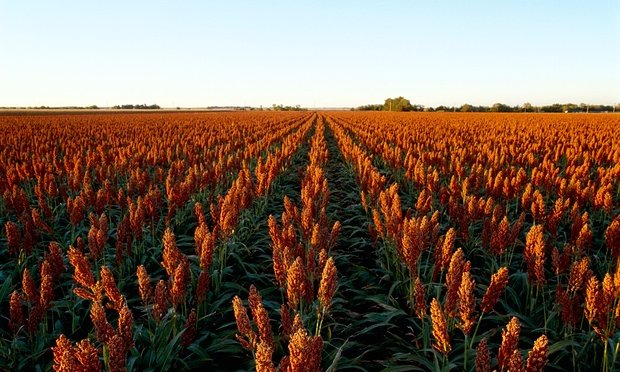
Forget millet, quinoa and brown rice: there’s a new grain in town.
Sorghum, an ancient grain from the dry African plains, is finally finding its way into restaurants throughout the United States. Whether it’s a drizzled on top of desserts, mixed into salads, or used in a no-rice risotto, chefs turned onto the ingredient have fallen in love with it.
“It’s called the ‘wonder grain’,” says Chef Michelle Bernstein of Cena by Michy and Seagrape restaurants in Miami, “And as a chef, it truly is a wonder.”
Bernstein explains that her restaurant – like many others – had been incorporating quinoa into the menu but that without variety, food becomes boring. “Our lives can’t just be about quinoa,” she says.
Other than sorghum’s versatility, its texture that really gives it an edge over other grains: “It fills your mouth and your stomach.”
Though it’s the fifth most popular cereal crop in the world, sorghum was largely ignored in the US until recently. While sweet sorghum molasses has brightened traditional southern cooking for generations, the grain itself has been mostly used as feed for cows and livestock. But when the drought hit, grain farmers started looking for something delicious and drought-resistant to plant, and sorghum’s popularity exploded.
In today’s health-conscious world, a grain as versatile as sorghum that is also gluten-free, easier on the digestive system, and rich in antioxidants, vitamins, and protein is basically a sure thing. Plus, it’s eco-friendly. An acre of sorghum uses a third-less water than an acre of corn and fewer expensive fertilizers too.
Hugo’s, a restaurant chain California, has not only substituted sorghum for many rice dishes – spanish rice, horchata, flatbreads, among others – but they put a public statement about it right on the menu.
“Introducing sorghum: the drought-tolerant, low-water-usage, wonder grain,” Tom Kaplan, co-owner and founder, reads off the menu. “I’m trying to introduce sorghum not just to our customers but to other restaurants because it could save millions of pounds of water.”
Rice isn’t out entirely – the restaurant goes through about 25 tons of the stuff per year (at about 300 gallons of water to produce each pound) – but in the last six to eight months they’ve been playing with their first ton of organic sorghum.
Kaplan boasts, “While other restaurants are doing one or two things with sorghum, we’re doing dozens.” In the 35 years the restaurant has been open, they’ve always been at the forefront of trends – quinoa, chai, vegan and even gluten-free. So the fact that Hugo’s has taken up sorghum as it’s newest focus is a good sign for the grain; the gastronomic equivalent of being signed to a major Hollywood agent or having your book on Oprah.
It’s important to note that eating sorghum isn’t just a (small) environmental cause.
Marc Forgione, chef and co-owner of Restaurant Marc Forgione in New York, is adamant that eating is still the most important part of going out to a restaurant. They use all kinds of sorghum on their menu and Forgione (who avoids gluten himself) is a personal fan. “I like it because it tastes good,” he says. “I’m a chef first and foremost, not a doctor.”
He’s even used it in a dish called “space breads”, the recipe for which sounds like a concoction thought up over a few post-shift beers. What if we took dough, foamed it out of a whipped cream canister, dyed it green, cooked it, and then put escargot on top to make it look like they were crawling over moss? It’s weird and brilliant and 100% gluten-free!
Another advantage sorghum has over its more established cousins is that it’s cheap. “Even if the price goes up two or three times, it’ll still be cheaper than quinoa,” Kaplan says. In fact, he actually hopes the price does increase since it would encourage more farmers to grow it and get it onto even more plates throughout the country. As Kaplan says, “Sorghum is a staple ingredient in Africa, India, China, Australia, Central America, Mexico … it’s time for it to become a staple ingredient in the United States instead of cattle feed and biofuel.”
Source: Move over, quinoa: sorghum is the new ‘wonder grain’ | Life and style | The Guardian

